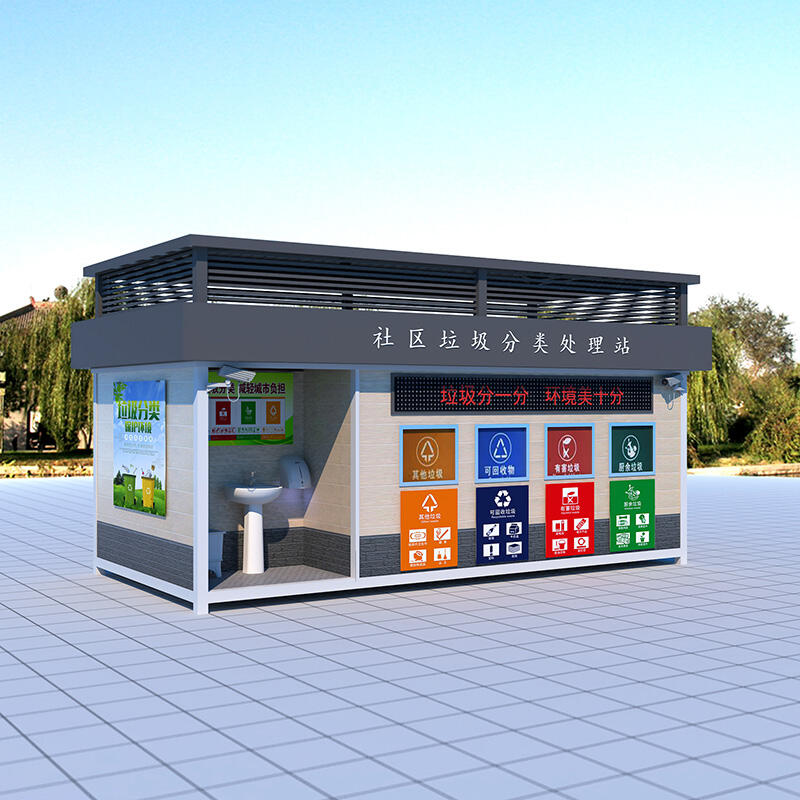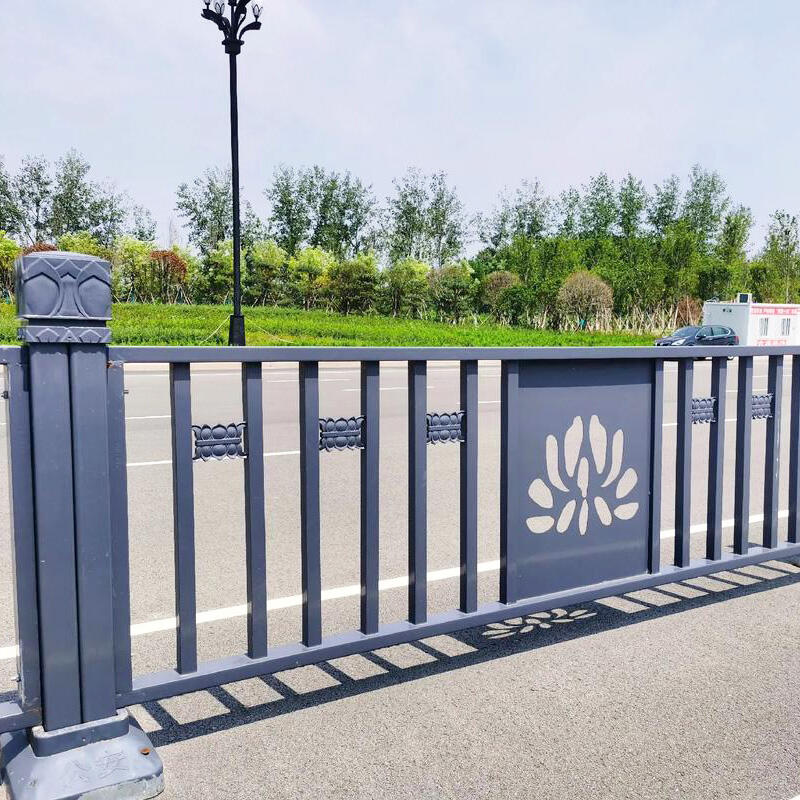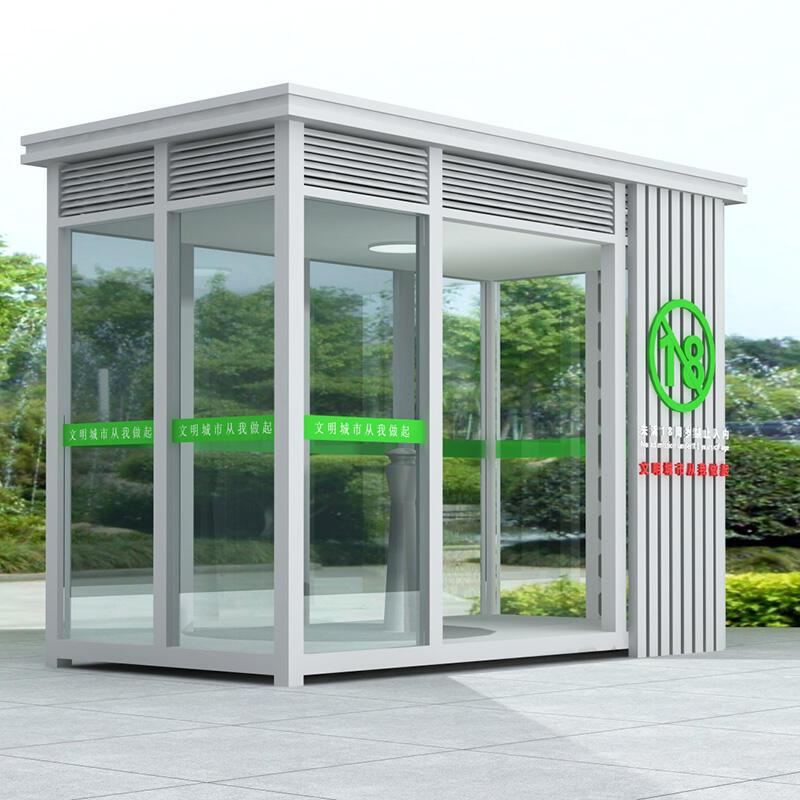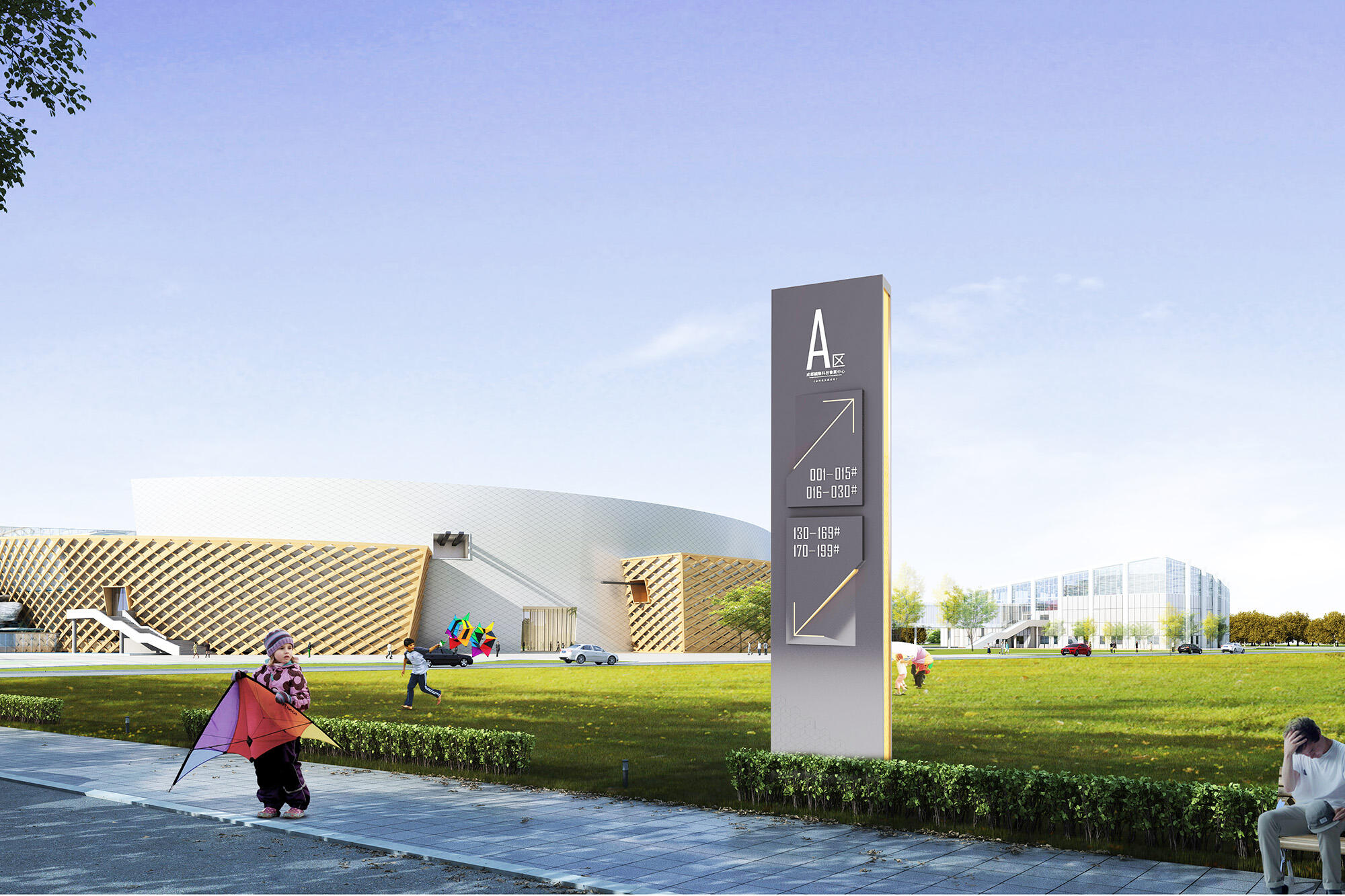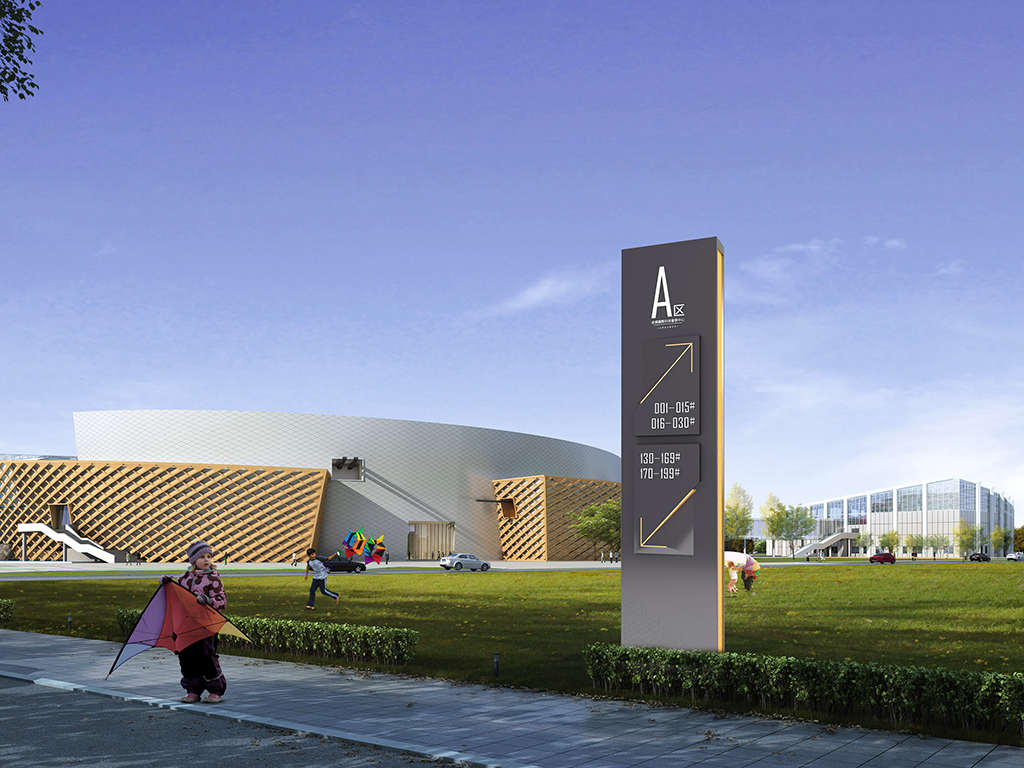নগর নেভিগেশনে পথচিহ্নের অপরিহার্য ভূমিকা
জটিল পরিবেশে ব্যবহারকারী অভিজ্ঞতা উন্নয়ন করতে
অপারেটিভ সাইনপোস্টিং শহুরে নেভিগেশনে একটি গুরুত্বপূর্ণ ভূমিকা পালন করে যা হাটের জন্য মানসিক চাপ বিশেষভাবে কমায়। যখন সাইনপোস্টগুলি স্পষ্টভাবে অবস্থান করে এবং স্বাভাবিক, তখন তা ব্যবহারকারীদেরকে জটিল পরিবেশে নেভিগেট করতে দেয় ব্যাপক মানসিক চেষ্টা ছাড়াই, তাদের সম্পূর্ণ অভিজ্ঞতাকে উন্নত করে। গবেষণা নির্দেশ করে যে উত্তেজিত শহুরে পরিবেশে স্বাভাবিক পথ নির্দেশনা ব্যবস্থা ব্যবহারকারীদের মধ্যে বিরক্তির মাত্রা কমায়। এই মানসিক চাপের হ্রাস শুধুমাত্র নেভিগেশনকে সহজ করে না, বরং সব শহুরে ব্যবহারকারীর জন্য আরও আনন্দদায়ক এবং কম চাপের পরিবেশ তৈরি করে।
অধিকন্তু, পরিসংখ্যান দেখায় যে ব্যবহারকারীদের সন্তুষ্টি ভালভাবে ডিজাইনকৃত সংকেতপटের সাথে ধনাত্মকভাবে সংযুক্ত, কারণ মানুষ পথ খুঁজে বের করতে সময় আত্মবিশ্বাস ও দক্ষতা অনুভব করে। স্পষ্ট এবং সংক্ষিপ্ত সংকেতপটের উপস্থিতি শহুরে জায়গাগুলিতে সহজ গতিশীলতা তৈরি করে, যা আজকালের দ্রুতগতি সমাজে খুবই মূল্যবান। কার্যকর সংকেতপটকে শহুরে পরিবেশে একত্রিত করা শুধুমাত্র অভিমুখ নির্ধারণে সাহায্য করে না, বরং শহরের মোটামুটি জীবনের গুণগত মানও বাড়িয়ে দেয়।
শহুরে পরিকল্পনা এবং বাণিজ্যিক সুবিধার সাথে একত্রিত
শহর পরিকল্পনা প্রয়াসের শুরুতেই ডায়ারেকশনাল সিস্টেম একত্রিত করা শহরের সমগ্র ডিজাইনকে উন্নয়ন করতে গুরুত্বপূর্ণ। শহরের উন্নয়নের প্রাথমিক ধাপেই সাইনবোর্ড গুরুত্ব দেওয়ার মাধ্যমে পরিকল্পনাকারীরা শহরের বাস্তব সংরचনার সাথে ভ্রমণ একত্রিত করতে পারেন। এই সহযোগিতা মাধ্যমে সহজে ভ্রমণযোগ্য পরিবেশ তৈরি হয়। যে শহরগুলো একত্রিত ডায়ারেকশনাল সিস্টেম গ্রহণ করেছে সফলভাবে, সেখানে সাধারণত সার্বজনিক পরিবহনের এবং অন্যান্য গুরুত্বপূর্ণ শহুরে উপাদানের সহজ প্রবেশ লক্ষ্য করা যায়।
অস্তিত্বকারী শহুরতন্ত্রের সৌন্দর্যমূলক ইনফ্রাস্ট্রাকচারের সাথে চিহ্ন পদ্ধতির ডিজাইন মিলিয়ে শহুরপ পরিকল্পনাকারীরা ফাংশনাল এবং দৃষ্টিগোচরভাবে আকর্ষণীয় পরিবেশ তৈরি করতে পারেন। কেস স্টাডিগুলো দেখায়েছে যে ভালভাবে একত্রিত চিহ্ন পদ্ধতি সম্পন্ন শহরগুলোতে মানুষ সহজে পাবলিক ট্রান্সপোর্টেশন ব্যবহার করে, কারণ যাত্রীরা পরিবহন কেন্দ্রগুলোকে খুঁজে বের করতে এবং সেখানে যেতে অধিক সহজলগু পায়। পথনির্দেশনা পদ্ধতি এবং শহুরপ পরিকল্পনার মধ্যে সিনার্জি শহুর জায়গাগুলোর ব্যবহারযোগ্যতা বাড়ায় এবং স্থায়ী উন্নয়ন ও উন্নয়নকে সমর্থন করে।
কার্যকর পথনির্দেশনা পদ্ধতির মৌলিক ডিজাইন উপাদান
বিভিন্ন শ্রেণীর শ্রোতাদের জন্য পড়াশুনা এবং দৃশ্যমান স্পষ্টতা
পাথেয় নির্দেশনা পদ্ধতি তৈরিতে বর্ণস্পষ্টতা এবং চোখে পড়ার সুবিধা অত্যন্ত গুরুত্বপূর্ণ, বিশেষ করে বিভিন্ন শহুরে পরিবেশে। উপযুক্ত ফন্ট আকার, রঙের তুলনা এবং স্পেসিং এমন মৌলিক ডিজাইন নীতিগুলি প্রাথমিকভাবে গুরুত্ব দেওয়া উচিত যেন সবাই, বিশেষ করে দৃষ্টিশক্তি হারানো ব্যক্তিদের জন্য সাইনগুলি পড়া সহজ হয়। এছাড়াও, বিশ্বব্যাপী প্রতীক ব্যবহার করা বিভিন্ন সাক্ষরতা এবং সাংস্কৃতিক পটভূমির মানুষের বোঝার ক্ষমতাকে গুরুত্বপূর্ণ ভাবে বাড়াতে পারে।
আর্বান ডিজাইন অধ্যয়ন আরও উল্লেখ করে যে স্পষ্ট সাইনবোর্ড নেভিগেশনকে অনেক সহজ করে, স্থানীয়দের এবং পর্যটকদের জন্য সমগ্র অভিজ্ঞতাকে উন্নত করে। এই ডিজাইন উপাদানগুলিতে ফোকাস দিয়ে শহরগুলি ব্যাপক শ্রেণীর জন্য অন্তর্ভুক্তিপূর্ণ এবং দক্ষ পাথেয় নির্দেশনা পদ্ধতি তৈরি করতে পারে।
শহুরে পরিবেশে দৈর্ঘ্য এবং উপাদান নির্বাচন
শহুরে পরিবেশে সাইনেজের জন্য সঠিক ম্যাটেরিয়াল নির্বাচন তার দীর্ঘস্থায়িত্ব এবং কার্যকারিতার জন্য অত্যন্ত গুরুত্বপূর্ণ। আবহাওয়ার বিরুদ্ধে রক্ষণশীল ম্যাটেরিয়াল, যেমন কোচড় মেটাল এবং UV-প্রতিরোধী কম্পোজিট, শহরে সাধারণত পাওয়া কঠিন পরিবেশগত শর্তগুলি সহ করতে জরুরি। এই ম্যাটেরিয়ালের জন্য মানদণ্ড রূপরেখা এবং দৈর্ঘ্য সামন্তরিকভাবে সুন্দর দেখতে হওয়ার সাথে সাথে শহুরে পরিবেশের দৃশ্য আকর্ষণ বজায় রাখতে হবে।
গবেষণা দেখায় যে উচ্চ গুণের ম্যাটেরিয়ালে বিনিয়োগ করা সময়ের সাথে সাথে রক্ষণাবেক্ষণের খরচ কমায়, যা একটি ব্যয়-কার্যকর সমাধান হিসেবে প্রমাণিত হয়। সুতরাং, ম্যাটেরিয়ালের উপর সতর্ক বিবেচনা করা সাইনেজের দৈর্ঘ্য এবং শহরের রূপরেখার সংরক্ষণ উভয়ই নিশ্চিত করে।
একত্রিত স্থান নির্ধারণের মাধ্যমে নিরাপত্তা এবং সহজ প্রবেশের উন্নয়ন
স্পষ্ট দিকনির্দেশনা দিয়ে যানবাহনের সংঘর্ষ কমানো
পথ নির্দেশনা সংকেতের রणनীতিক স্থাপনা যানবাহনের বিপদ কমাতে, আগেই সতর্কতা জানাতে এবং পরিষ্কার পথ নির্দেশনা দিতে খুবই গুরুত্বপূর্ণ। যানবাহনের ভূল বোঝার ঝুঁকির অঞ্চল বিশ্লেষণ করে এবং রणনীতিক বিন্দুতে সংকেত স্থাপন করে শহরগুলি রাস্তার নিরাপত্তা কার্যকরভাবে উন্নয়ন করতে পারে।
অধ্যয়নের মাধ্যমে দেখানো হয়েছে যে চিহ্নিত পথিক পার এবং ঠিকঠাক স্থানে যানবাহন সংকেত ব্যবহার করা দুর্ঘটনার হার প্রস্তুত করতে পারে যেমন পূর্ণ সংকেত রণনীতি গ্রহণকারী শহরগুলিতে ২০% হ্রাস রিপোর্ট করা হয়েছে। এছাড়াও, শহুরে কেন্দ্র থেকে কেস স্টাডি দেখায় যে কার্যকর সংকেত বাস্তবায়নের ফলে যানবাহনের প্রবাহ উন্নত এবং নিরাপদ রাস্তা পাওয়া যায়, যা শহুরে পথ নির্দেশনা ব্যবস্থায় পরিষ্কার দিকনির্দেশনার গুরুত্ব উল্লেখ করে।
পথিক এবং চলন্ততা সমস্যার জন্য অন্তর্ভুক্তিপূর্ণ ডিজাইন
অক্ষমতা সহ ব্যক্তিদের জন্য পথ নির্দেশনা পদ্ধতি ডিজাইন করা অন্তর্ভুক্তিমূলক শহুরে জায়গাগুলি তৈরি করতে গুরুত্বপূর্ণ। স্পর্শজনিত মানচিত্র এবং শব্দ চিহ্ন সকল সমुদায়ের সদস্যদের জন্য প্রবেশ সুবিধা নিশ্চিত করতে কার্যকর উপকরণ। এটি চলনা সমস্যার সঙ্গে থাকা ব্যক্তিদের জন্য তাদের পরিবেশে স্বাধীনভাবে ভ্রমণ করতে দেয়।
আমেরিকার অক্ষমতা আইন (ADA) এর মতো অন্তর্ভুক্তিমূলকতা প্রচার করা নীতিগুলি সার্বজনিক জায়গাগুলিতে এই বৈশিষ্ট্যগুলির একত্রীকরণ প্রচার করে। পোর্টল্যান্ডের মতো শহরের উদাহরণ দেখায় যে অন্তর্ভুক্তিমূলক চিহ্ন চলনায় কিভাবে ইতিবাচক প্রভাব ফেলে, একটি সমাজের পরিবেশ তৈরি করে যেখানে সকলেই সেবা এবং জায়গাগুলি প্রাপ্তি করতে পারে বাধা ছাড়া। এই উপাদানগুলি পথ নির্দেশনা পদ্ধতিতে একত্রীকরণ করা শুধুমাত্র প্রবেশ সুবিধা বাড়ায় না, সমাজের ভালোস্বাস্থ্য এবং সমানতাও সমর্থন করে।
শহুরে পথ নির্দেশনা চিহ্নের অর্থনৈতিক এবং সমাজসেবা উপকার
স্থানীয় ব্যবসার দৃশ্যতা এবং পর্যটন বাড়ানো
কার্যকর পথনির্দেশনা সংকেতপ্রণালী স্থানীয় ব্যবসায়ের দৃশ্যমানতা বৃদ্ধি করে এবং পর্যটকদের আকর্ষণ করে। এই সম্পর্কটি দোকান এবং সেবা প্রদানকারীদের জন্য পদচারী ট্রাফিক বৃদ্ধির জন্য গুরুত্বপূর্ণ। একটি ভালভাবে বাস্তবায়িত পথনির্দেশনা প্রणালী ভিজিটরদের বাণিজ্যিক অঞ্চলগুলিতে সহজে পার হতে সাহায্য করে, রিটেল এবং খাবারের স্থানগুলিতে প্রবেশের সুবিধা বাড়ায়।
উদাহরণস্বরূপ, লন্ডন এবং এসেন মতো শহরগুলি রणনীতিগত সংকেতপ্রণালীর মাধ্যমে তাদের পর্যটন খাত এবং স্থানীয় অর্থনৈতিক আয় বৃদ্ধি করতে সফল হয়েছে। গবেষণা দেখায় যে পরিষ্কার এবং তথ্যপূর্ণ সংকেত পর্যটকদের আকর্ষণ করে আকর্ষণীয় স্থান এবং কম জানা আকর্ষণের দিকে, যা পর্যটন-সম্পর্কিত আয়কে বিশাল পরিমাণে বাড়িয়ে তোলে। এই বৃদ্ধি শুধুমাত্র স্থানীয় ব্যবসায়ের উন্নতি করে তার বাইরেও সমुদায়ের উজ্জ্বল অর্থনৈতিক বোঝাপড়ায় অবদান রাখে।
অভিন্ন ব্র্যান্ডিং মাধ্যমে নাগরিক পরিচয় বাড়ানো
পথনির্দেশনা পদ্ধতি একটি শহরের গণ-অভিজাত পরিচয়কে সম্পূর্ণ ব্র্যান্ডিংয়ের মাধ্যমে বাড়িয়ে তোলে। যখন সাইনবোর্ডগুলি শহুরে পরিবেশে ভালভাবে একত্রিত হয়, তখন এটি একটি ঐক্যমূলক দৃশ্যমান পরিচয় তৈরি করে যা সামुদায়িক গর্ব ও অংশগ্রহণে অবদান রাখে।
সাইনবোর্ডের একক ব্র্যান্ডিং ভ্রমণকারীদের শহরটিকে আয়োজিত এবং স্বাগতিক হিসেবে মনে করতে উৎসাহিত করে। নিউ ইয়র্ক সিটি এবং লন্ডনের মতো ব্র্যান্ডিং প্রচেষ্টার সফল উদাহরণগুলি দেখায় যে কীভাবে নতুন ধারণামূলক সাইনবোর্ড ডিজাইন ধন্যবাদ এবং অংশগ্রহণ আকর্ষণ করে। এই শহরগুলি স্থাপত্য মানদণ্ড ব্যবহার করেছে যেন সাইনবোর্ডগুলি শহরের ব্র্যান্ডে অবদান রাখে এবং ব্যবসায়িক সफলতা এবং ভূমির মূল্য বাড়ায়। এই ঐক্যমূলক ব্র্যান্ডিং শুধুমাত্র ভ্রমণকারীদের মনের মত উন্নয়ন করে না, বরং সরকারি গর্ব উন্নয়ন করে এবং সামাজিক অংশগ্রহণ এবং বিনিয়োগের দিকে প্ররোচিত করে।
শহুরে পথনির্দেশনা প্রযুক্তি এবং উদ্ভাবনের ভবিষ্যৎ প্রবণতা
ডিজিটাল নেভিগেশন টুলসহ স্মার্ট সাইনবোর্ডের একত্রীকরণ
ডিজিটাল নেভিগেশন টুলসহ স্মার্ট সাইনেজ এর একত্রিত করা বাস্তব-সময়ের তথ্য প্রদানের মাধ্যমে শহুরে পথ চিহ্ন নির্দেশনা বিপ্লব ঘটাচ্ছে। সাইনেজকে মোবাইল অ্যাপ্লিকেশন এবং GPS সিস্টেমের সাথে সিঙ্ক করে, শহরগুলি বাসিন্দাদের এবং অতিথিদের জন্য ভৌগোলিক ভিত্তিক উপযুক্ত নেভিগেশন পরিষেবা প্রদান করতে পারে। আগমন বাস্তবতা (AR) ফিজিক্যাল বিশ্বের উপর নেভিগেশন ডেটা যুক্ত করে রুট এবং গন্তব্য ব্যবহারকারীদের জন্য চিত্রায়ণ করার মাধ্যমেও আনন্দজনক সম্ভাবনা উপস্থাপন করে।
লাস ভেগাসের মতো শহরগুলি বিশেষভাবে স্মার্ট প্রযুক্তি ব্যবহার করে নেভিগেশনের দক্ষতা উন্নয়ন করেছে, ব্লুটুথ-চালিত বিয়াকন সিস্টেমের মাধ্যমে সহজ নেভিগেশন অভিজ্ঞতা প্রদান করে। আরও বেশি শহর এই প্রযুক্তি গ্রহণ করতে দেখা যাচ্ছে, এটি একটি আরও সংযুক্ত শহুরে পরিবেশের দিকে একটি গুরুত্বপূর্ণ লাফ চিহ্নিত করে।
সাইনেজ নির্মাণে ব্যবহৃত স্থিতিশীলতা মূলক অনুশীলন
সাইনবোর্ড তৈরির মধ্যে উদ্যোগশীল পদ্ধতির দিকে গতি লাগানো শহুরে পরিবেশে পরিবেশ বান্ধব চিহ্ন প্রচারের জন্য খুবই গুরুত্বপূর্ণ। পুন: ব্যবহৃত ধাতু এবং উদ্যোগশীল প্লাস্টিকের মতো উপকরণ ব্যবহার শহুরে সাইন তৈরির কার্বন ফুটপ্রিন্ট কমায়। LEED এর মতো নিয়মাবলী এবং সনদপত্র শহুরে সাইন ডিজাইনে উদ্যোগশীল পদ্ধতি অনুসরণের জন্য গুরুত্বপূর্ণ।
স্যান ফ্রান্সিসকোর মতো শহরগুলি এই পদ্ধতিগুলি গ্রহণ করেছে, পরিবেশীয় প্রভাব কমানোর জন্য সৌরশক্তি চালিত সাইন ব্যবহার করে। এই উদ্ভাবনী দৃষ্টিভঙ্গি শুধুমাত্র পরিবেশকে সুরক্ষিত রাখে না, বরং সাইন তৈরির জন্য নতুন মানদণ্ড স্থাপন করে যা উভয় পরিবেশ বান্ধব এবং অর্থনৈতিকভাবে সম্ভব। শহুরে এলাকাগুলি যখন উদ্যোগশীলতাকে আগের চেয়ে বেশি গুরুত্ব দেয়, তখন এই পদ্ধতিগুলি একটি আরও পরিবেশ সচেতন ভবিষ্যত তৈরি করতে সাহায্য করবে।


